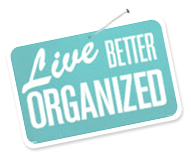By: Jillian Kramer
My friend set her tools on the countertop and went to town: She unscrewed the hinges from her kitchen cabinets and set the doors on the floor. She removed opaque and label-laden boxes of pasta and granola from the shelves and replaced them with clear jars and canisters. She swapped mismatched dishes for a monochromatic, matching set of plates, bowls, and goblets. And as she stood back and assessed her new, on-trend open kitchen storage, tears came to her eyes: My friend couldn’t believe she’d spent hours ruining her kitchen.
While open kitchen storage—the kind that allows you to display everything from pantry goods to antique serving platters for everyone to see—is seriously trending, it’s a style that’s not for everyone. So before you make a major kitchen renovation, here are some ways to tell if you’re really ready for open kitchen storage.
“As people are striving to live a cleaner, clutter-free, streamlined lifestyle, there is an awareness and desire to live with what they already own and be conscientious consumers without excessive overconsumption,” explains Jeanie Engelbach, founder and owner of apartmentjeanie, a lifestyle curation company. So those who want to pare back their personal belongings and live with less—or who desire a better understanding of what they really own—might like this style.
Open shelving doesn’t take the help of a contractor or costly renovations, so this style might also appeal to renters or homeowners who want a big change without spending big bucks. “Kitchen renovations or even minimal cosmetic changes require a lot of consideration, from the type of cabinet fronts, hardware you’ll use, finishes you’ll select, and more,” explains Engelbach. “An open shelving system eliminates all of those time consuming and costly decisions.”
Plus, for people with teeny-tiny kitchen or renters looking to add storage, open shelving is often the only solution. It “can be accommodated to fit small or awkward spaces that a readymade kitchen cabinet may not,” Engelbach says. “There isn’t a standard size for this style of storage, which can make it extremely desirable for challenging floor plans. It allows the person to utilize what may have been wasted space.”
But as appealing as it may sound, “open shelving isn’t a viable option for all people,” Engelbach says. Who shouldn’t attempt to display their dishes and pantry items? “Those who find organization a chore or have difficulty keeping the contents of kitchen cabinets consistent will not fare well with this style,” says Engelbach. “And if the person isn’t fond of her selection of dinner and stemware, then she won’t be inclined to want to see them from every sight line in her kitchen.”
The good news is, if you fear you’re like my friend—the kind of person who loves the look of open shelving but isn’t sure you can actually live with it yourself—you “needn’t commit to ripping out every cabinet to see if open shelving is a viable option,” Engelbach says.
Instead, she recommends, start with a single shelf and fill it with frequently used items, such as bowls, juice glasses, and dinner plates, and assess how you feel about the look and its utility. “It may seem counterintuitive to have a constantly used housewares selection as opposed to something more decorative like a platter or serving dish, which will register as display as opposed to functional,” Engelbach says. But open shelving won’t be all design and no function—so it’s best to start with the pieces that are least appealing and see if you can live with it and like it.
“An open shelving storage system, if done well and maintained properly, can make a small kitchen feel larger, lighter and brighter,” Engelbach says. But if you prefer the clean and clutter-free feel of closed cabinets, no one’s judging.


















Leave a Reply